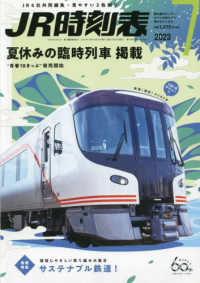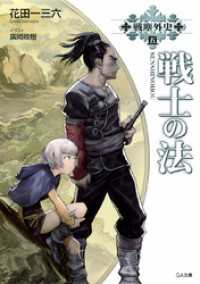基本説明
From tea bowls used in the Japanese tea ceremony to television broadcasts of Javanese puppet theater; from Indian wedding chamber paintings to art looted by the British army from the Chinese emperor's palace; from the adventures of a Balinese magical dagger to the political functions of classical Khmer images.
Full Description
Post-Enlightenment notions of culture, which have been naturalized in the West for centuries, require that art be autonomously beautiful, universal, and devoid of any practical purpose. The authors of this multidisciplinary volume seek to complicate this understanding of art by examining art objects from across Asia with attention to their functional, ritual, and everyday contexts. From tea bowls used in the Japanese tea ceremony to television broadcasts of Japanese puppet theater; from Indian wedding chamber paintings to art looted by the British army from the Chinese emperor's palace; from the adventures of a Balinese magical dagger to the political functions of classical Khmer images - the authors challenge prevailing notions of artistic value by introducing new ways of thinking about culture. The chapters consider art objects as they are involved in the world: how they operate and are experienced in specific sites, collections, rituals, performances, political and religious events and imagination, and in individual peoples' lives; how they move from one context to another and change meaning and value in the process (for example, when they are collected, traded, and looted or when their images appear in art history textbooks); how their memories and pasts are or are not part of their meaning and experience. Rather than lead to a single universalizing definition of art, the essays offer multiple, divergent, and case-specific answers to the question ""What is the use of art?"" and argue for the need to study art as it is used and experienced.
-

- 電子書籍
- 私、何度か死んでます~愛しい陛下の為な…
-

- 電子書籍
- ぽんわり薬師専属タンクに転職したら、人…
-

- 電子書籍
- 六畳間の侵略者!?37 HJ文庫
-

- 和雑誌
- JR時刻表 (2023年7月号)
-

- 電子書籍
- 戦塵外史 五 戦士の法 GA文庫



